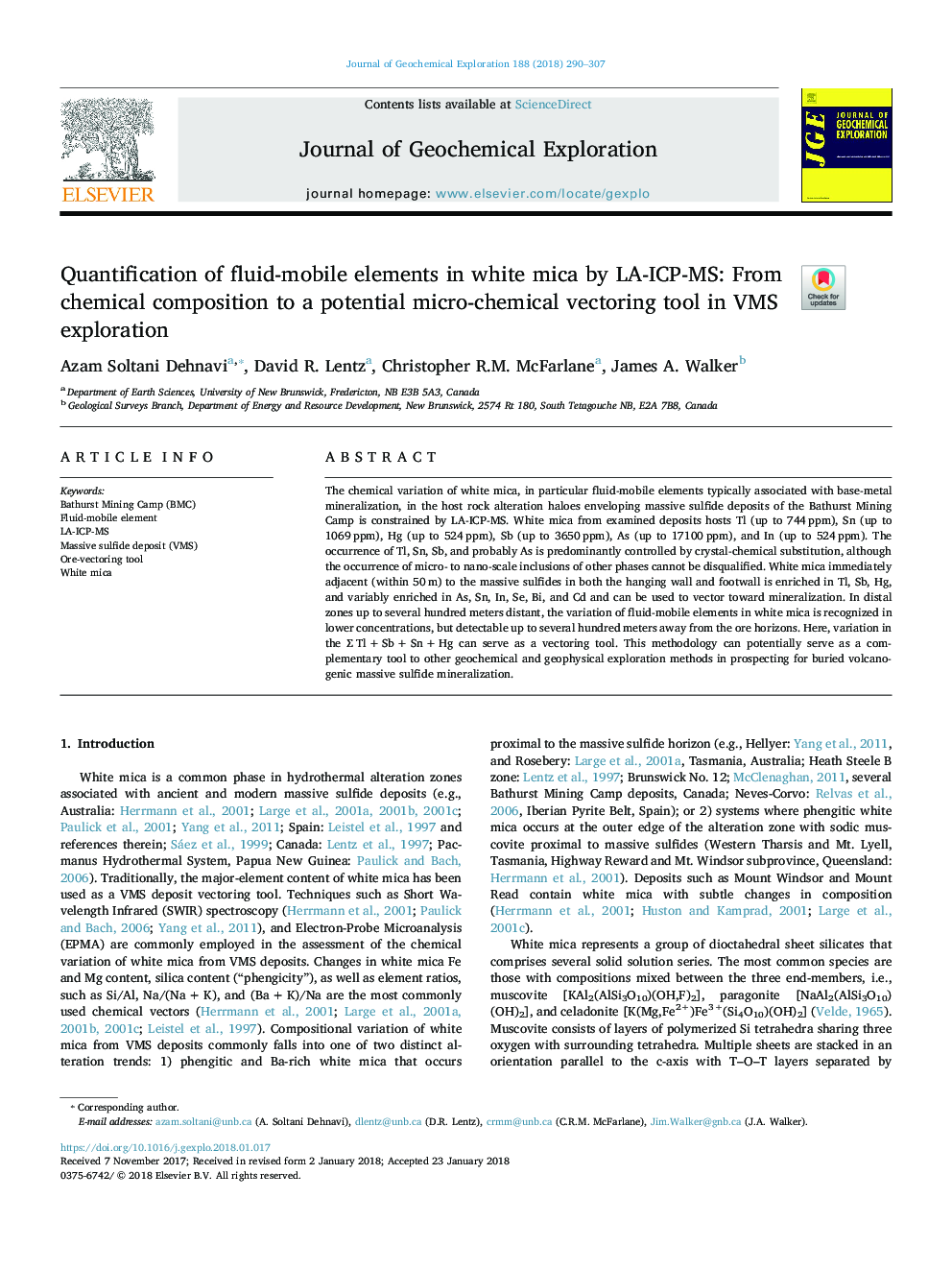| Article ID | Journal | Published Year | Pages | File Type |
|---|---|---|---|---|
| 8866013 | Journal of Geochemical Exploration | 2018 | 18 Pages |
Abstract
The chemical variation of white mica, in particular fluid-mobile elements typically associated with base-metal mineralization, in the host rock alteration haloes enveloping massive sulfide deposits of the Bathurst Mining Camp is constrained by LA-ICP-MS. White mica from examined deposits hosts Tl (up to 744â¯ppm), Sn (up to 1069â¯ppm), Hg (up to 524â¯ppm), Sb (up to 3650â¯ppm), As (up to 17100â¯ppm), and In (up to 524â¯ppm). The occurrence of Tl, Sn, Sb, and probably As is predominantly controlled by crystal-chemical substitution, although the occurrence of micro- to nano-scale inclusions of other phases cannot be disqualified. White mica immediately adjacent (within 50â¯m) to the massive sulfides in both the hanging wall and footwall is enriched in Tl, Sb, Hg, and variably enriched in As, Sn, In, Se, Bi, and Cd and can be used to vector toward mineralization. In distal zones up to several hundred meters distant, the variation of fluid-mobile elements in white mica is recognized in lower concentrations, but detectable up to several hundred meters away from the ore horizons. Here, variation in the ââ¯Tlâ¯+â¯Sbâ¯+â¯Snâ¯+â¯Hg can serve as a vectoring tool. This methodology can potentially serve as a complementary tool to other geochemical and geophysical exploration methods in prospecting for buried volcanogenic massive sulfide mineralization.
Keywords
Related Topics
Physical Sciences and Engineering
Earth and Planetary Sciences
Economic Geology
Authors
Azam Soltani Dehnavi, David R. Lentz, Christopher R.M. McFarlane, James A. Walker,
